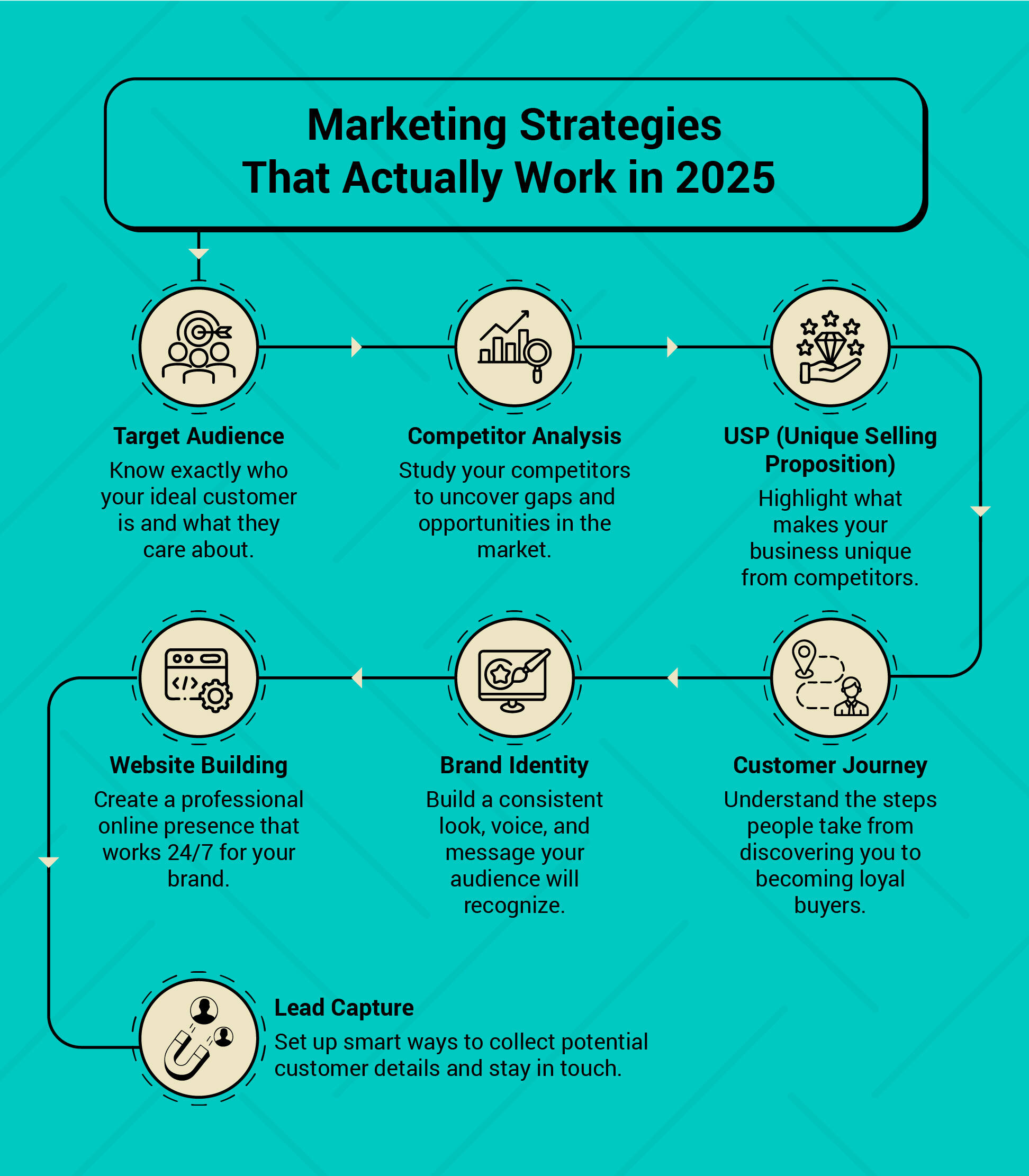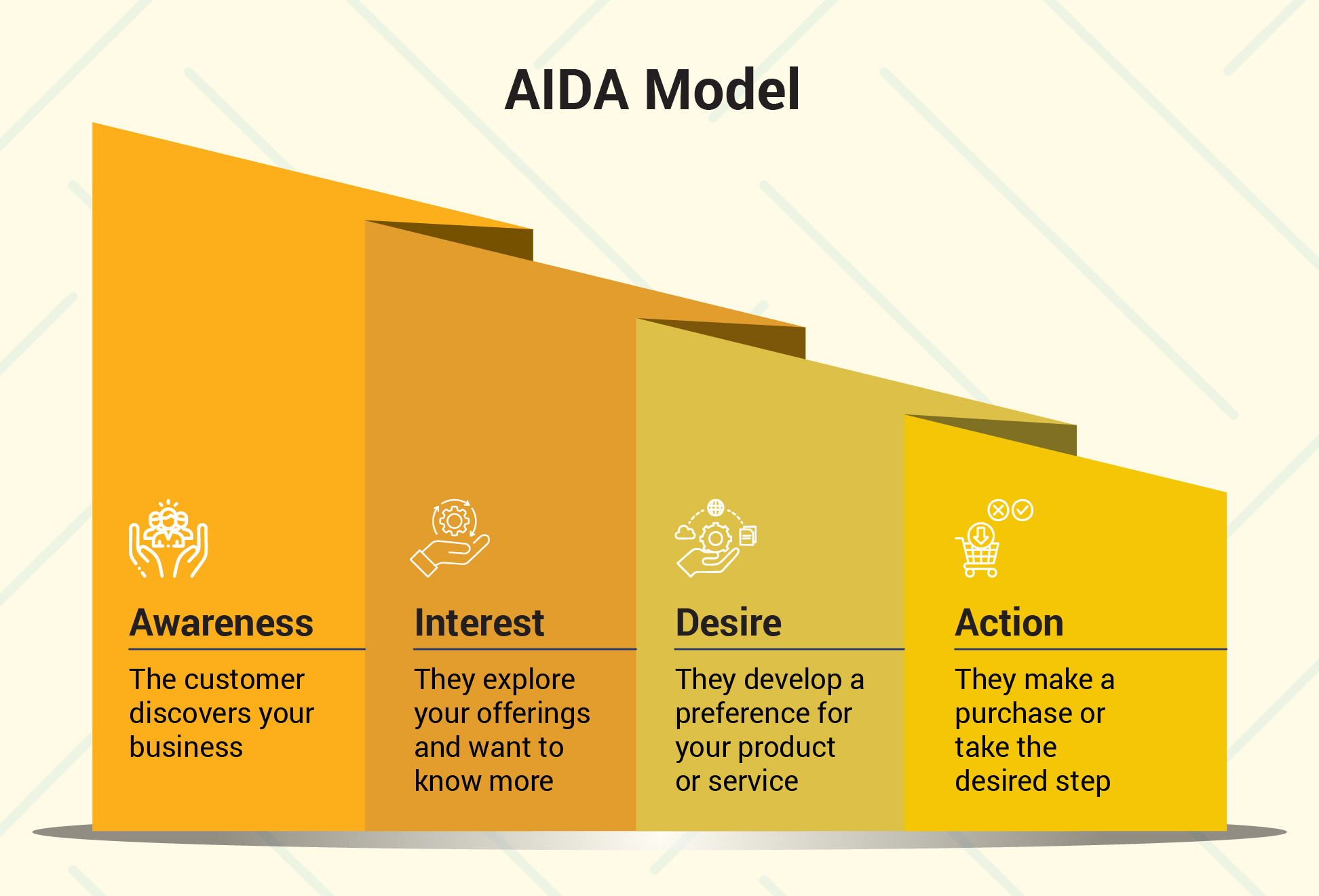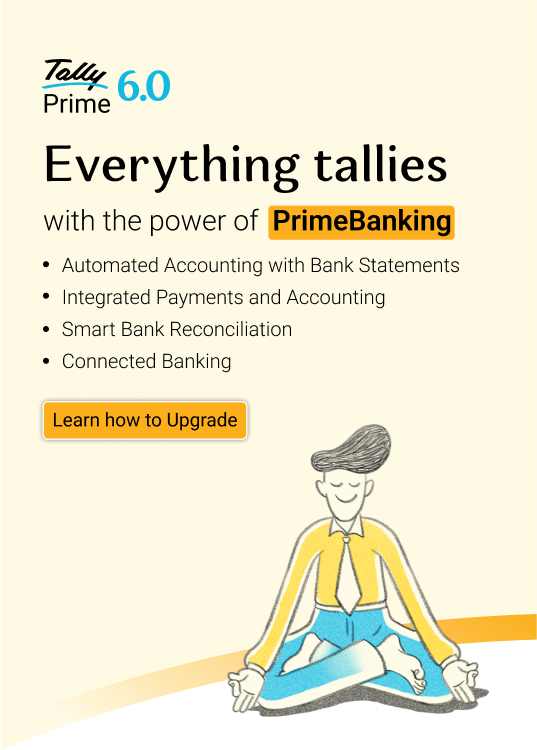Marketing a small business today is harder than it used to be. There are more platforms, more competition, and constantly changing customer behaviour. Many small business owners attempt various marketing strategies, such as social media posts, online ads, and email campaigns, yet still struggle to achieve results.
Why does this happen?
Trying random marketing ideas without a clear plan often leads to confusion, wasted money, and poor results. In 2025, marketing is no longer about doing more; it's about doing what actually works. With limited budgets and time, small businesses need smart, focused strategies that deliver real value. The right marketing plan helps you attract the right audience, build trust, and grow your business in a sustainable way.
In this blog, we’ll walk you through marketing strategies for small businesses in 2025.
What is small business marketing?
Small business marketing means promoting your products or services in a way that helps you reach more customers and grow your business. It includes everything you do to make people aware of your business, build trust, and encourage them to buy from you.
For example, when you:
- Share posts on Instagram or Facebook
- Send emails to your customers
- Put up a sign outside your shop
- Offer a discount to bring in new buyers
……you are marketing.
How is it different from big brand marketing?
Large companies like Amazon and Coca-Cola have the advantage of extensive marketing teams and substantial budgets. They can invest crores in large-scale advertising, celebrity endorsements, and nationwide campaigns. With access to advanced tools and resources, they can easily target diverse customer segments and conduct in-depth market research to refine their strategies.
But small businesses often don’t have access to the same level of resources. With limited budgets, they must focus on targeting specific niche markets, and using low-cost, high-impact marketing strategies. What small businesses may lack in scale, they can make up for in agility and personal connection by building strong relationships through personalized engagement. By trying new approaches, they can create meaningful customer experiences that foster loyalty and growth. Small business marketing is more about being creative, practical, and building trust over time.
Why does it matter?
For small businesses, every rupee spent on marketing needs to bring value. There’s no room for guesswork. That’s why your marketing should aim to:
- Reach the right audience
- Show what makes your business special
- Turn visitors into loyal customers
Good marketing doesn’t always mean spending more money; it means using the right strategies that work for your size, budget, and goals.
What to do before you create a marketing strategy
Before you jump into running ads or posting on social media, you need to lay the foundation for your marketing. Without this groundwork, even the most effective strategies may not yield results.
Here’s a simple checklist to get your business ready for successful marketing:

Define your target audience
Think about who your product or service is for. What kind of person is most likely to buy from you? Consider their age, location, interests, spending habits, and what problems they are trying to solve.
For example, if you sell handmade soaps, your ideal customer might be someone who prefers natural products, shops online, and values skin care.
When you understand your audience, you can talk to them in a way that feels personal and relevant.
Look at what your competitors are doing
Spend some time studying other businesses in your industry. Understanding your competitors will help you gain better clarity on your own business strategy. Conduct a thorough competitor analysis, including a SWOT analysis to evaluate their strengths, weaknesses, opportunities, and threats. Identify areas where they may be underperforming — this can reveal opportunities for your business to stand out and serve customers more effectively.
Additionally, analyze their 4 P’s (Product, Price, Place, and Promotion) along with their market share to assess the effectiveness of their marketing strategy. This will help you position your brand more strategically in the market and identify gaps you can capitalize on.
Define what makes you unique
After gaining a clear understanding of your competitors, focus on identifying the Unique Selling Proposition (USP) of your product or service. Your value proposition is the core reason why customers should choose your business over others.
Ask yourself:
- What problem do I solve for my customers?
- What benefit do I offer that competitors don’t?
- Why do the loyal customers choose us over the competitors?
A well-defined value proposition not only helps differentiate your brand in a crowded market but also becomes the foundation of your marketing and growth strategy. It's your ultimate advantage — your business’s ace card.
Create a user-friendly website
In today’s digital age, your website is often the first place potential customers visit to learn about your business. It should be intuitive, responsive, and especially optimized for mobile devices. A well-designed website allows users to navigate effortlessly and access information without confusion.
A strong website not only creates a positive first impression but also builds trust in your brand. To ensure your site supports your business goals, make sure it:
- Loads quickly
- Has clear information about your products or services
- Includes a simple way to contact or buy from you
A seamless and user-friendly experience will not only attract visitors but also keep them engaged with your brand.
Create a strong brand identity
Your brand is more than just a logo — it's the overall perception people have of your business. Brand identity is a combination of visual elements (like your logo, colors, and typography), verbal elements (such as tone of voice and messaging), and your brand personality.
A strong brand identity helps differentiate you from competitors, builds trust, and fosters loyalty. It plays a key role in attracting new customers while retaining existing ones. A well-crafted identity not only makes your business look more professional but also strengthens credibility in the market.
Key elements include:
- Business name and tagline
- Colour scheme and logo
- Tone of voice (formal, friendly, playful, etc.)
- Consistent design across your website, social media, and packaging
Understand how people become customers
Now that your foundational work is complete, it’s time to shift focus to the most important element: the customer. This is where the customer journey becomes crucial. Even the most well-planned marketing strategy can fail if you overlook this essential component.
Take a moment to consider how a potential customer discovers your brand, learns about your product or service, and eventually makes a purchase. It may sound simple, but guiding a customer through this path requires intentional planning.
The customer journey refers to the complete experience a customer has while interacting with your business — from the first point of contact to post-purchase engagement. If you're unsure where to start, the AIDA model is a reliable framework to follow:

- Awareness: The customer discovers your business
- Interest: They explore your offerings and want to know more
- Desire: They develop a preference for your product or service
- Action: They make a purchase or take the desired step
Understanding each stage allows you to create more relevant content, targeted messaging, and strategic offers — ultimately improving conversions and customer satisfaction.
Set up lead capturing and CRM tools
Don’t let interested customers slip away. Use tools that help you collect customer details (like email addresses or phone numbers). This is called lead capture. Once collected, use a CRM (Customer Relationship Management) system to keep track of your customers and follow up with them through emails, calls, or offers.
Marketing strategies that actually work
Once your basics are in place, it’s time to start marketing. But instead of trying every new trend, focus on strategies that are already working for small businesses in 2025. These methods are effective, budget-friendly, and proven to deliver results.
Create value with content
Creating useful, interesting, and relevant content helps attract the right people to your business.
What works:
- Write helpful blog posts that answer common questions your customers have
- Share tips, how-to guides, or customer stories on your website
- Create downloadable resources like checklists or e-books
| Pro Tip: Use a free tool like Canva to design graphics or infographics that make your content more engaging and shareable. |
Leverage social media
Social platforms are where people spend their time. It’s also where they discover new brands.
What works:
- Post short, eye-catching videos and reels to grab attention
- Show behind-the-scenes content to build trust and connection
- Use local hashtags and location tags to reach nearby audiences
| Pro Tip: Plan and schedule your posts using tools like Buffer to stay consistent without spending all day online. |
Focus on SEO and local SEO
If you want people to find your business on Google, you need to show up in search results.
What works:
- Use simple keywords your customers might search for (like “home baker in Pune”)
- Add your business to Google Business Profile with your address, contact info, and photos
- Encourage happy customers to leave reviews online
| Pro Tip: Use tools like Ubersuggest or Google Keyword Planner to find keywords that match your business and location. |
Email marketing
Email is still one of the best ways to stay in touch with customers and encourage recurring business.
What works:
- Send helpful tips, updates, or offers to your subscribers
- Keep your emails short, clear, and personal
- Always include a clear call-to-action (like “Shop Now” or “Learn More”)
| Pro Tip: Try free tools like Mailchimp or Sender to design and send professional-looking emails with ease. |
Influencer collabs and partnerships
You don’t need a celebrity to promote your business. Small influencers and local creators can bring real results.
What works:
- Partner with creators who share your target audience
- Offer free products in exchange for honest reviews or mentions
- Team up with non-competing local businesses for cross-promotion
| Pro Tip: You can directly reach out via Instagram to find micro-influencers who genuinely connect with your niche. |
Referral and affiliate programs
People trust recommendations from friends and family. A well-designed referral program can transform your customers into loyal promoters.
What works:
- Offer a discount or reward for every new customer they refer
- Make the process simple to share via link or code
- Promote your referral program through emails and social media
| Pro Tip: Use simple software like ReferralCandy or Growsurf to automate tracking and rewards. |
Paid ads (PPC)
If you have a small budget, paid ads can give you quick visibility, especially if you know where your audience spends their time.
What works:
- Use Facebook or Instagram ads to promote offers or new launches
- Run Google Ads for high-intent search terms (like “buy yoga mat online”)
- Start small, test different messages, and adjust based on results
| Pro Tip: Set a daily ad budget and use platforms’ built-in insights to see what’s working best. |
Brand storytelling
People remember stories more than products. Sharing your brand journey can build emotional connections.
What works:
- Tell the story of how your business started
- Share your mission and the values that drive you
- Feature your team and behind-the-scenes content on social media
- Highlight customer stories and real-life results
| Pro Tip: Use Instagram Stories or your website’s “About” page to tell your story in your own voice. Keep it honest and relatable. |
Marketing trends to follow in 2025
The marketing world keeps changing, and staying updated helps small businesses stay competitive. Here are the key trends you should know and apply in 2025:
-
AI-powered personalisation: AI tools are making it easier to send the right message to the right person. Use chatbots, smart email tools, and automated replies to offer a more personal experience, without needing a big team.
-
Short-form video is everywhere: Short videos like Instagram Reels and YouTube Shorts are now the most engaging form of content. They’re quick to make, cost little, and work well to show products or customer stories.
-
Voice and local search: More people are using voice search on phones and smart speakers. Make sure your business appears in local searches by updating your Google Business Profile and using location-based keywords.
-
Omnichannel consistency: Customers interact with you on many platforms, like your website, social media, email, and even WhatsApp. Make sure your brand message and design feel the same everywhere.
-
Micro-influencers and UGC: Working with smaller influencers and encouraging customers to share photos or reviews is more trusted than big celebrity ads.
It feels more real, and it’s more affordable too. -
Data-driven decisions: Use various tools available to track what’s working because the more you understand your audience’s behaviour, the better decisions you can make.
Real case study: SUGAR Cosmetics – Small brand, big moves
To show how good marketing can create big success, let’s look at the story of SUGAR Cosmetics, a homegrown Indian beauty brand.
Background
SUGAR began as a small online brand that sold makeup products directly to customers. With a limited budget but strong focus, they built their business step by step. They didn’t rely on big celebrity ads. Instead, they focused on smart digital strategies that worked for their target audience.
What they did right
Here’s how SUGAR Cosmetics hit the nail on the head:
- Knew their audience well: They focused on young, urban women who wanted bold, affordable, and high-quality makeup.
- Built a bold brand identity: From their product packaging to their social media tone, SUGAR stood out as confident, fun, and relatable.
- Focused on Instagram and influencers: They created eye-catching Reels and partnered with beauty creators to reach the right crowd.
- Used customer data wisely: By collecting information on their website, they sent personalised emails and product recommendations that matched customer interests.
- Mobile-first website and smooth checkout: They made sure their online store worked perfectly on phones and made the buying process intuitive and fast.
The results
- Grew from a small startup to a ₹100+ crore brand
- Now available in 45,000+ retail stores across India
- Built a loyal fan base and strong online presence
Final Words
Marketing a small business doesn’t have to be complicated or expensive. The key is to focus on what actually works. Instead of trying random tactics, take the time to understand your audience, build a strong brand, and use the right mix of strategies that fit your goals and budget. Whether it’s creating helpful content, using social media wisely, or running low-cost ad campaigns, small steps done consistently can bring big results. As with SUGAR Cosmetics, smart planning and the right tools can turn a small business into a major success.












